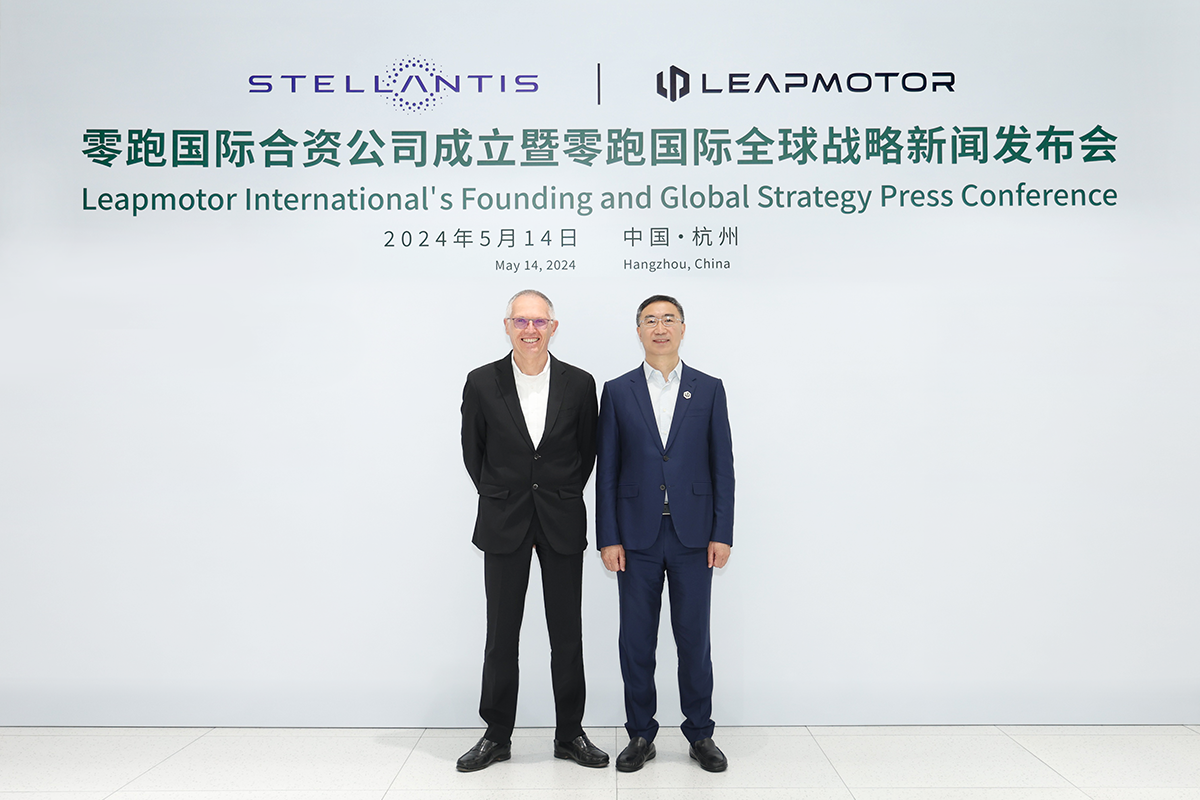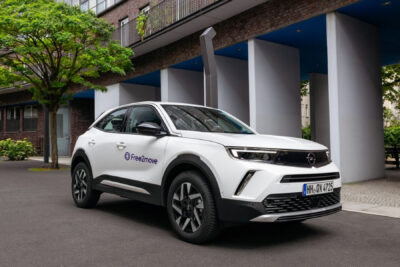Joint venture between Stellantis and Leapmotor to start operation in September
The market launch in Europe will initially start in France, Italy, Germany, the Netherlands, Spain, Portugal, Belgium, Greece and Romania. In addition, both sides have announced that 200 sales outlets will be established by the end of the year, followed by 500 by 2026. The expansion into the India & Asia-Pacific, Middle East & Africa and South America regions is also planned from the fourth quarter of 2026. As far as product priorities are concerned, the T03 and C10 models are to be launched on the market first under Leapmotor International, followed by the introduction of at least one further model per year over the next three years.
Stellantis announced at the end of October that it was investing in Leapmotor and acquiring a 20 per cent stake in the Chinese company for 1.5 billion euros. The deal is intended to boost Leapmotor’s sales in China – and in Europe – and is based on the establishment of the aforementioned joint venture called Leapmotor International.
It was already known that Stellantis would hold 51 per cent and Leapmotor 49 per cent of the joint venture. When announcing the plans, both sides also announced that the joint venture would have ‘exclusive rights to export, sell and manufacture Leapmotor products outside Greater China’. The management team, based in Amsterdam, will be led by CEO Tianshu Xin, the former head of Stellantis’ China business.
Further key points were then made public in November: As revealed in the annual report on Stellantis’ latest quarterly figures, the joint venture is aiming to sell 500,000 electric cars outside China by 2030. Within China, Leapmotor aims to sell one million electric cars per year in the long term. Leapmotor International is also set to become another brand of the Stellantis Group for low-cost electric cars.
“The creation of Leapmotor International is a great step forward in helping address the urgent global warming issue with state-of-the-art BEV models that will compete with existing Chinese brands in key markets around the world,” comments Stellantis CEO Carlos Tavares. “Leveraging our existing global presence, we will soon be able to offer our customers price competitive and tech-centric electric vehicles that will exceed their expectations. Under Tianshu Xin’s leadership, they have built a compelling worldwide commercial and industrial strategy to quickly ramp-up the sales distribution channels to support Leapmotor’s robust growth and create value for both partners.”
“The partnership between Leapmotor and Stellantis demonstrates a high level of efficiency, opening a new chapter in the global integration of China’s intelligent electric vehicle industry,” said Leapmotor Founder, Chairman and CEO Jiangming Zhu. “Leveraging Leapmotor’s cutting-edge technology and products, along with Stellantis’ support in areas such as overseas channels, services, and marketing, we hope that users around the world can experience the exceptional driving and riding experience brought by Leapmotor products. We believe that this cooperation can give Leapmotor a boost to become a respected world-class intelligent electric vehicle company.”
Last year, both sides set up a ‘liaison office’ to coordinate the collaboration – on the Stellantis side, this was headed up by manager Grégoire Olivier, who will also act as a member of Leapmotor’s board of directors. ‘Grégoire Olivier will ensure the implementation of the new strategic partnership, including the establishment of the sales joint venture and coordination with Leapmotor on the utilisation of Stellantis’ sales and distribution resources,’ it said. Olivier was previously Chief Operating Officer of Stellantis in China. This position will now be filled by Doug Ostermann, who will also become a member of the Leapmotor board.
Stellantis’ plan is to utilise Leapmotor’s “highly innovative, cost-efficient EV ecosystem” in China, which, as leaked in advance, probably refers to the Chinese manufacturer’s Leap 3.0 platform. The latter was presented at the IAA in Munich in September. At the premiere, Leapmotor emphasised that it was open to cooperation, as the company not only wanted to build cars, but also to become ‘a provider of core technologies for electric vehicles’, as Zhu Jiangming, CEO of Leapmotor, put it at the time.
Exports to Europe via Leapmotor International will now begin in September 2024. Among other things, this should help Stellantis to achieve the targets defined in its Dare Forward 2030 strategy. All of the car manufacturer’s brands are to sell only electric cars in Europe from 2030. In the USA, the target BEV share of sales of passenger cars and light commercial vehicles (including pickups) is 50 per cent.
The joint venture is now focussing on the T03 small electric car and the C10 SUV model from Leapmotor. Back in March, Reuters reported, citing insiders, that Stellantis was planning to build the T03 at its Polish plant in Tychy. The Fiat 600e, among others, has also been produced there since last year. The T03 is already available in some European markets, for example in France at prices starting at around 20,000 euros.
In March, it was also announced that Leapmotor was planning to sell the C10 in Europe, specifically in Germany, France, Italy and Spain. The joint venture is now likely to be responsible for the launch.
In February, rumours emerged that Stellantis could produce electric cars for its Chinese joint venture partner at the Mirafiori plant in Italy. This report was also based on information from insiders — and has still not been confirmed.





0 Comments